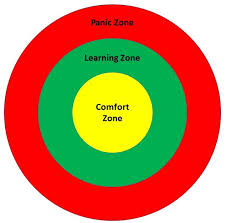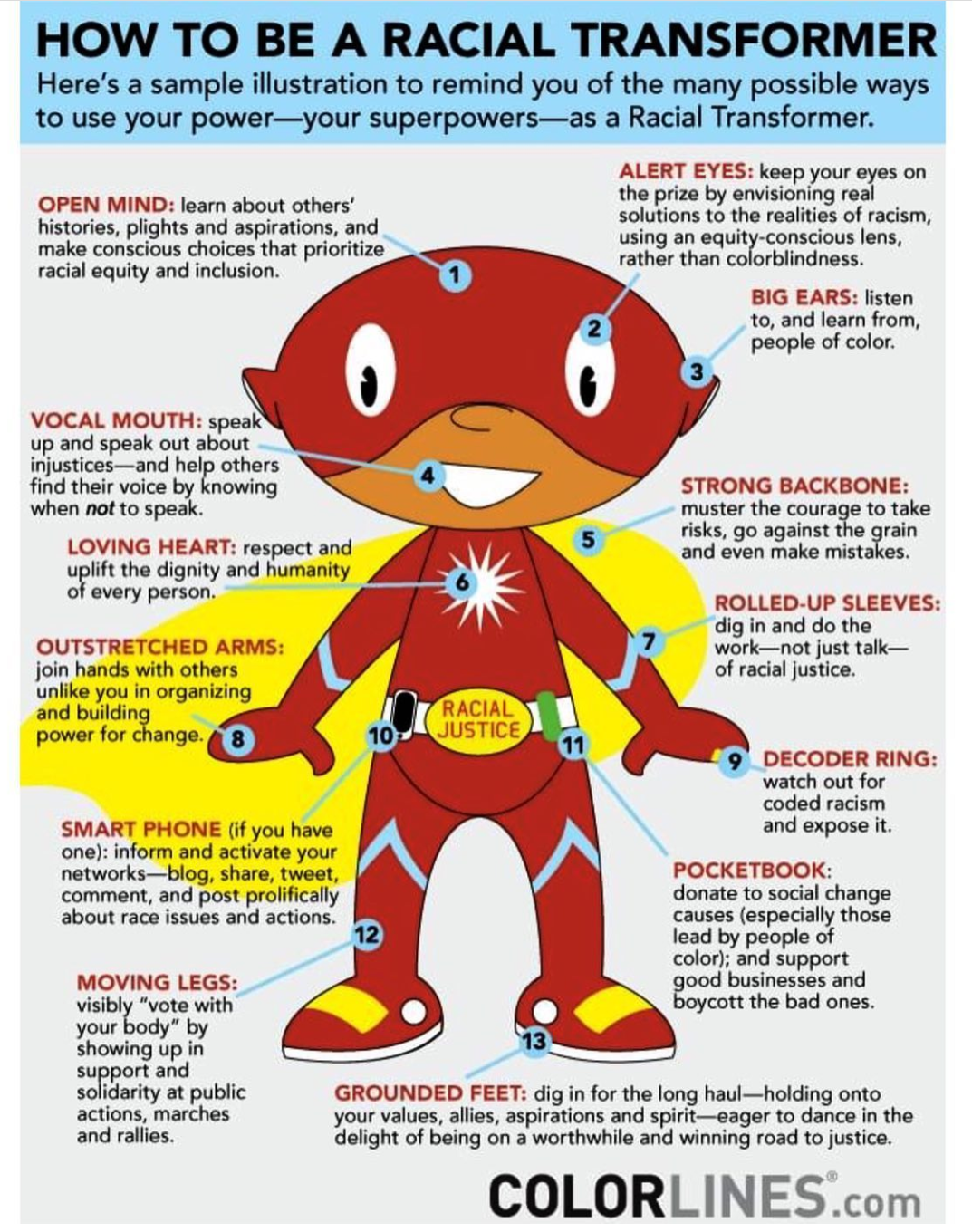10+ Tools For Better Anti-Racism Conversations
1. Recognize & continue to keep in mind your positionality/intersectionality (thanks to Kimberlé Williams Crenshaw) whenever you’re in conversations around race:
You have to know your systemic positions of privilege and oppression before you can engage in the work effectively. Understand that these can fluctuate depending on the context you’re in, so before entering any conversation, read the “socio-cultural power analytics” of the space in order to dismantle them:
2. Build a strong vocabulary:
A common vocabulary is important as you build your social-justice and anti-racism toolkits. Racial Equity Tools has a glossary that is very helpful, Check out the hyperlink to learn more about words like “accountability,” “anti-racism,” “institutional racism,” “decolonization,” “privilege,” “White Supremacy Culture,” and “settler colonialism” to name a few! If you’re not sure of a word, look it up!
3. Practice social justice working agreements:
These can sometimes work just as well outside of group work in your interpersonal exchanges as they do in affinity spaces. Whether you’re engaged in an in-person discussion or an online exchange, consider common social justice group norms that lead to more respectful conversations. Here are some to practice:
- Speak from the I perspective (avoid speaking for others)
- Make space / take space (share the air)
- Listen to understand instead of respond
- This is heart-work not head-work, so lead from empathy and compassion
- Imagine good intentions but own the more important consequences of impact
- No tone policing of the marginalized group: “target identities” get to speak openly and share their truth
- Expect non-closure: 400+ years of racism will not be solved through one twitter exchange. Take a break when you leave the stretch zone into a panic zone (below). But it’s also important that you eventually return.
4. Build a Courageous Conversations framework (from Glenn Singleton):
To build empathy, be aware of which corner of the compass you’re operating from and which corner of the compass the other people in the conversation may be operating from. Try to engage in new ways of relating to the topic at hand:
- Thinking: Intellectual Orientation
- Doing: Action-based Orientation
- Believing: Ethical or Moral Orientation
- Feeling: Emotional Orientation
5. Practice the Stop Light Method of Allyship:
An Action Plan for practicing allyship in conversations around race–use the stop-light method to reflect on your role, depending on the context:
6. Stay with the discomfort and include trauma-informed frameworks:
Allies and accomplices should always be aiming for the stretch zone in their social justice engagement, also known as the learning zone. Over time, everyone builds stronger resilience and adaptability in their nervous system responses the more they practice having race-based, equity-driven conversations.
Too often, those who experience the least amount of racialization in their day to day lives are unpracticed at engaging in their stretch zone. If you’re a little bit uncomfortable that means you’re learning! If someone calls you out or calls you in, that’s a learning moment. If you end up in a conversation where one or multiple parties are in the panic zone, it can be beneficial to step away from the conversation with an agreement to return later when everyone is back in their stretch zone.
7. Be wary of the symbolic or the performative:
- What is “performative allyship”?
- Read this Instagram outline of optical allyship by Mireille Cassandra Harper
- Follow Ijeoma Oluo’s advice in this Vox article in response to the social media “black out”: “Be wary of things that are purely symbolic; they are not helpful. We are not dying because of lack of symbolism in this country, so question who benefits from that,” says @IjeomaOluo.
8. White people:
- Listen, listen, listen. White people are often acculturated to believe that they have the answers. In conversations regarding race, white people should aim to talk about their own whiteness when appropriate but refrain from believing they “know” the answers or understand the truth regarding racism or racist experiences. Whether you’re talking in a mixed-race group or an all-white group, keep a framework in mind that encourages you to listen to the needs of people of color before you draw conclusions about what’s right, wrong, or going on. Believe people of color. Listen to people of color. Allow yourself to be changed. Allow yourself to not know because you probably don’t. Don’t center whiteness by centering your ideas in mixed race spaces.
- Educate yourself. DO NOT rely on PoC or marginalized people around you to educate you about their oppression. You’ll know better and do better by buying and reading books by BIPOC folx. If you’re only reading white people’s perspectives on racism, you’re not listening. Diversify your social media. Watch amazing ted talks like this one on How to Be An Anti-Racist by Ibram X. Kendi. Keep seeking out resources that already exist and are authored by BIPOC.
- Center Black Women Leaders in your education. Compensate them generously for their labor (through donations or paying to attend their workshops).
9. Consider opportunities for finding shared values:
10. Remember that anti-racism is teamwork:
Talking about systemic injustice can be exhausting and requires collective coalitions to keep it moving. Find people who are also doing the work. A racially diversified coalition network will strengthen your decision-making and accountability to Black Liberation. Work with other people and groups to build allyship accountability systems where you push each other to learn more, challenge each other (aka call in or call out) when you say something racist, and learn to accept that we all have biases and blindspots. Your anti-racism accountability network is your most dependable mirror, as long as they are willing to challenge you. An echo-chamber is not an accountability system.
10+ Pause to actually read the shared resources:
The internet doesn’t need to totally dictate our speed. I, too, feel compelled to respond at the pace of a twitter feed. But we are not machines. We are human, and it requires time and space to learn about the history of racism in America and the current systemic forces that dehumanize us. Pick just one topic and focus on it. You don’t have to be an expert in anything if you’re willing to practice vulnerability and not knowing.
So take a deep breath, create a handy google doc with “to read” resources, and slow down. This work happens at the speed of trust and balance. Once you’ve actually read it, pass it on and keep sharing!




